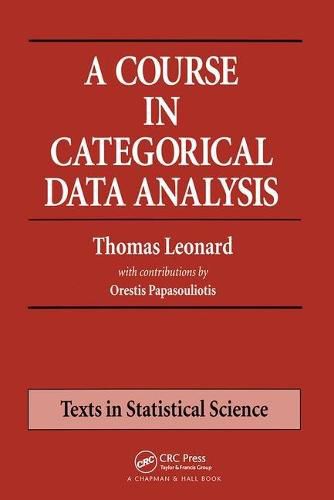Readings Newsletter
Become a Readings Member to make your shopping experience even easier.
Sign in or sign up for free!
You’re not far away from qualifying for FREE standard shipping within Australia
You’ve qualified for FREE standard shipping within Australia
The cart is loading…






Categorical data-comprising counts of individuals, objects, or entities in different categories-emerge frequently from many areas of study, including medicine, sociology, geology, and education. They provide important statistical information that can lead to real-life conclusions and the discovery of fresh knowledge. Therefore, the ability to manipulate, understand, and interpret categorical data becomes of interest-if not essential-to professionals and students in a broad range of disciplines.
Although t-tests, linear regression, and analysis of variance are useful, valid methods for analysis of measurement data, categorical data requires a different methodology and techniques typically not encountered in introductory statistics courses. Developed from long experience in teaching categorical analysis to a multidisciplinary mix of undergraduate and graduate students, A Course in Categorical Data Analysis presents the easiest, most straightforward ways of extracting real-life conclusions from contingency tables. The author uses a Fisherian approach to categorical data analysis and incorporates numerous examples and real data sets. Although he offers S-PLUS routines through the Internet, readers do not need full knowledge of a statistical software package.
In this unique text, the author chooses methods and an approach that nurtures intuitive thinking. He trains his readers to focus not on finding a model that fits the data, but on using different models that may lead to meaningful conclusions. The book offers some simple, innovative techniques not highighted in other texts that help make the book accessible to a broad, interdisciplinary audience. A Course in Categorical Data Analysis enables readers to quickly use its offering of tools for drawing scientific, medical, or real-life conclusions from categorical data sets.
$9.00 standard shipping within Australia
FREE standard shipping within Australia for orders over $100.00
Express & International shipping calculated at checkout
Categorical data-comprising counts of individuals, objects, or entities in different categories-emerge frequently from many areas of study, including medicine, sociology, geology, and education. They provide important statistical information that can lead to real-life conclusions and the discovery of fresh knowledge. Therefore, the ability to manipulate, understand, and interpret categorical data becomes of interest-if not essential-to professionals and students in a broad range of disciplines.
Although t-tests, linear regression, and analysis of variance are useful, valid methods for analysis of measurement data, categorical data requires a different methodology and techniques typically not encountered in introductory statistics courses. Developed from long experience in teaching categorical analysis to a multidisciplinary mix of undergraduate and graduate students, A Course in Categorical Data Analysis presents the easiest, most straightforward ways of extracting real-life conclusions from contingency tables. The author uses a Fisherian approach to categorical data analysis and incorporates numerous examples and real data sets. Although he offers S-PLUS routines through the Internet, readers do not need full knowledge of a statistical software package.
In this unique text, the author chooses methods and an approach that nurtures intuitive thinking. He trains his readers to focus not on finding a model that fits the data, but on using different models that may lead to meaningful conclusions. The book offers some simple, innovative techniques not highighted in other texts that help make the book accessible to a broad, interdisciplinary audience. A Course in Categorical Data Analysis enables readers to quickly use its offering of tools for drawing scientific, medical, or real-life conclusions from categorical data sets.